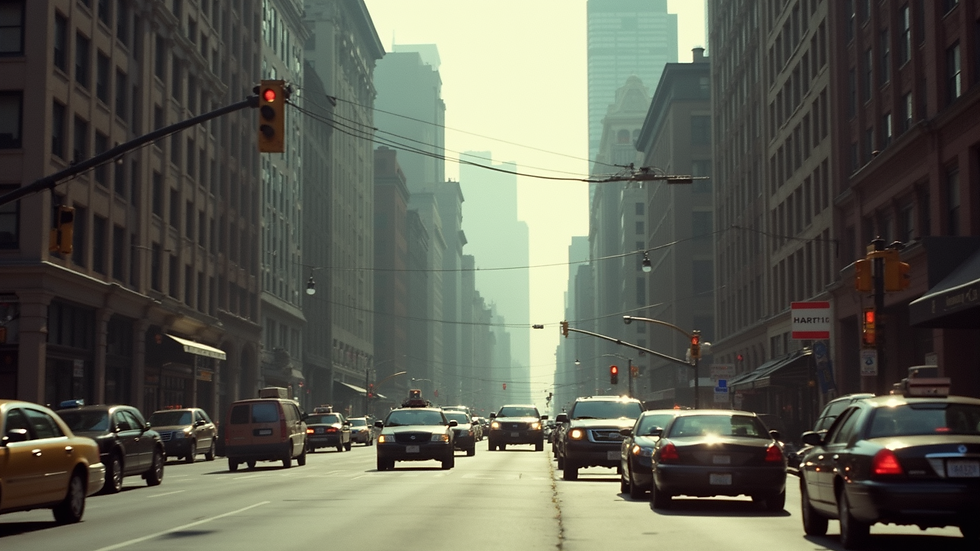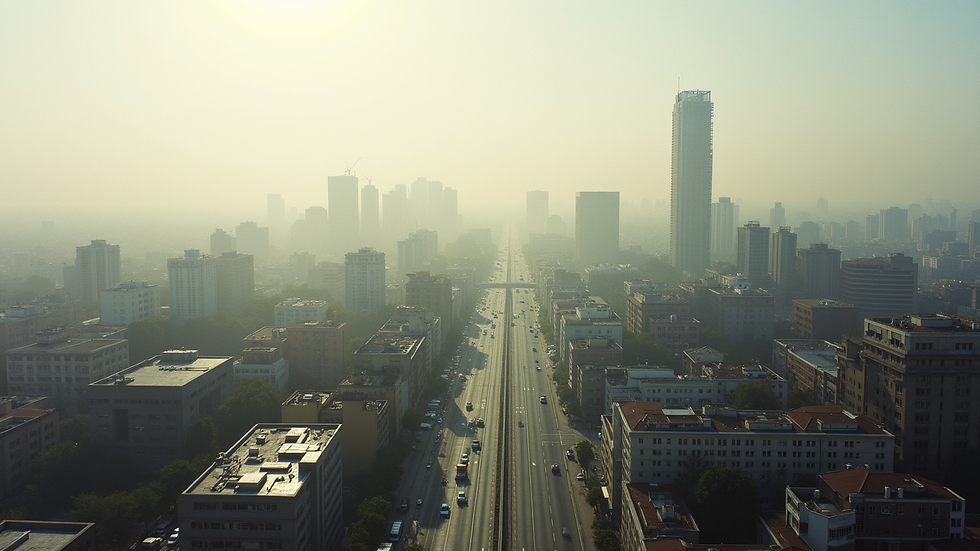Air Quality Health Advisory for Fine Particulates in New York Until Midnight EDT Tonight
- edu.plus.weatherray Rome
- Aug 3
- 3 min read
As the sun sets this evening, many New Yorkers are finding themselves in a worrisome situation. The New York State Department of Environmental Conservation has issued an Air Quality Health Advisory that will remain in effect until midnight EDT tonight. 9 PM This advisory provides essential information about air quality levels, particularly concerning fine particulates. With air quality predictions indicating an Air Quality Index (AQI) value exceeding 100, understanding its implications is vital for protecting personal and community health.
Understanding the Air Quality Index (AQI)
The Air Quality Index, commonly known as the AQI, is a system used to communicate air pollution levels to the public. It simplifies complex environmental data into categories ranging from “Good” to “Hazardous.”
When the AQI surpasses 100, it points to health risks, especially for sensitive groups like children, the elderly, and individuals with conditions such as asthma and heart disease. For instance, during the summer months of 2022, New York experienced numerous days with AQI values over 100, resulting in a 15% increase in emergency room visits for respiratory issues among sensitive populations. Understanding the AQI aids in recognizing the potential risks associated with poor air quality.

Health Implications of Fine Particulates
Fine particulates, especially those measuring 2.5 micrometers or less (known as PM2.5), present serious health risks. They can burrow deep into the lungs and bloodstream, causing widespread health issues. PM2.5 can arise from various sources, including vehicle emissions, industrial operations, and even wildfires. For example, during the 2020 California wildfires, PM2.5 levels in New York spiked, leading to a 25% increase in asthma-related hospitalizations.
The New York State Department of Health emphasizes reducing outdoor activity during times of high pollution. Exposure to elevated fine particulate levels can worsen conditions like asthma and bronchitis and increase the risk of heart problems. Sensitive individuals should be particularly cautious, taking steps to monitor air quality and limit outdoor exposure.
Recommendations During the Advisory
Here are some practical tips for New Yorkers during the current Air Quality Health Advisory:
Limit Outdoor Activity: Avoid outdoor exercise, especially when air quality is at its worst. When outdoor activities cannot be avoided, consider reducing exertion levels.
Stay Informed: Regularly check AQI levels from trusted sources like the New York State Department of Environmental Conservation website or the Air Quality Hotline.
Consult Health Professionals: Those with existing health issues or experiencing symptoms should talk to their doctors about air quality concerns.
Create a Clean Indoor Environment: If possible, use air purifiers, and keep windows closed to limit indoor pollution from outside sources.
Encourage Awareness: Share air quality information with family and friends to promote community awareness about health risks.

Accessing Further Information
For more information during this advisory period, residents can turn to the New York State Department of Environmental Conservation. Here are essential resources:
Website: Visit the New York State Department of Environmental Conservation for real-time updates on air quality.
Hotline: Call the Air Quality Hotline at 800-535-1345 for assistance from knowledgeable representatives.
These resources offer invaluable insights and guidance, helping residents make informed decisions about their well-being.
Stay Aware and Take Action
As air quality concerns rise in New York City this evening, it is crucial for residents to stay updated and take necessary precautions. This Air Quality Health Advisory reminds us of how environmental factors influence our health. By understanding the AQI and following recommended actions, individuals can navigate through this advisory more effectively.
Being vigilant, staying safe, and prioritizing personal and community health are all critical during times of poor air quality. Together, we can address the invisible dangers posed by air pollution and work towards a healthier environment.




Comments